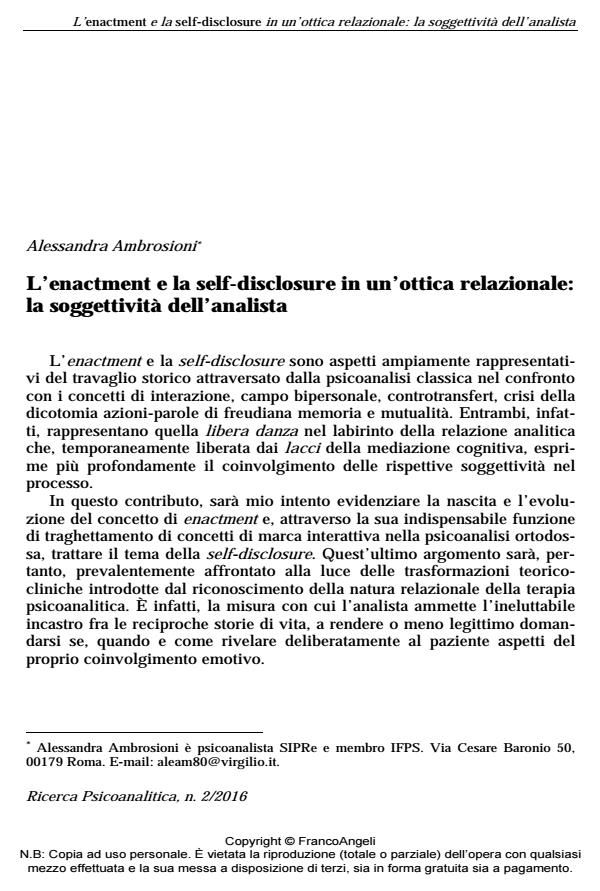L’enactment e la self-disclosure in un’ottica relazionale: la soggettività dell’analista
Titolo Rivista RICERCA PSICOANALITICA
Autori/Curatori Alessandra Ambrosioni
Anno di pubblicazione 2016 Fascicolo 2016/2
Lingua Italiano Numero pagine 19 P. 9-27 Dimensione file 87 KB
DOI 10.3280/RPR2016-002002
Il DOI è il codice a barre della proprietà intellettuale: per saperne di più
clicca qui
Qui sotto puoi vedere in anteprima la prima pagina di questo articolo.
Se questo articolo ti interessa, lo puoi acquistare (e scaricare in formato pdf) seguendo le facili indicazioni per acquistare il download credit. Acquista Download Credits per scaricare questo Articolo in formato PDF

FrancoAngeli è membro della Publishers International Linking Association, Inc (PILA)associazione indipendente e non profit per facilitare (attraverso i servizi tecnologici implementati da CrossRef.org) l’accesso degli studiosi ai contenuti digitali nelle pubblicazioni professionali e scientifiche
L’intento dell’Autore è quello di sottolineare come il concetto di enactment faccia la sua comparsa, dapprima a livello psicodinamico e poi a livello ufficiale, con l’articolo di Jacobs del 1986. La formalizzazione del termine si accompagna al necessario distinguo fra enactment e concetti mono-personali come l’acting out e l’identificazione proiettiva. L’enactment, stressando la natura interattiva del dialogo analitico, ha costretto gli psicoanalisti ad un rimaneggiamento della teoria tradizionale di riferimento ed alla ricerca di punti cardine di condivisione rappresentazionale resi possibili dal panel dell’APA nel 1992. Il tema della self-disclosure, verrà affrontato alla luce delle trasformazioni teorico-cliniche introdotte dal riconoscimento della natura relazionale della terapia analitica. Infine, il tema dell’enactment, sarà trattato alla luce della personale rappresentazione dell’Autore, tenendo conto del necessario distinguo fra enactment ed interazione, della complessità e della logica dialettica in cui tale dinamica si inscrive.
Parole chiave:Enactment, self-disclosure, acting-out, identificazione proiettiva, interazione
Alessandra Ambrosioni, L’enactment e la self-disclosure in un’ottica relazionale: la soggettività dell’analista in "RICERCA PSICOANALITICA" 2/2016, pp 9-27, DOI: 10.3280/RPR2016-002002